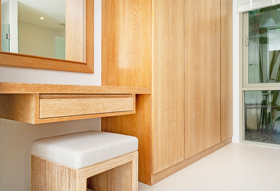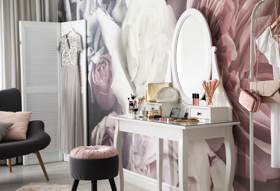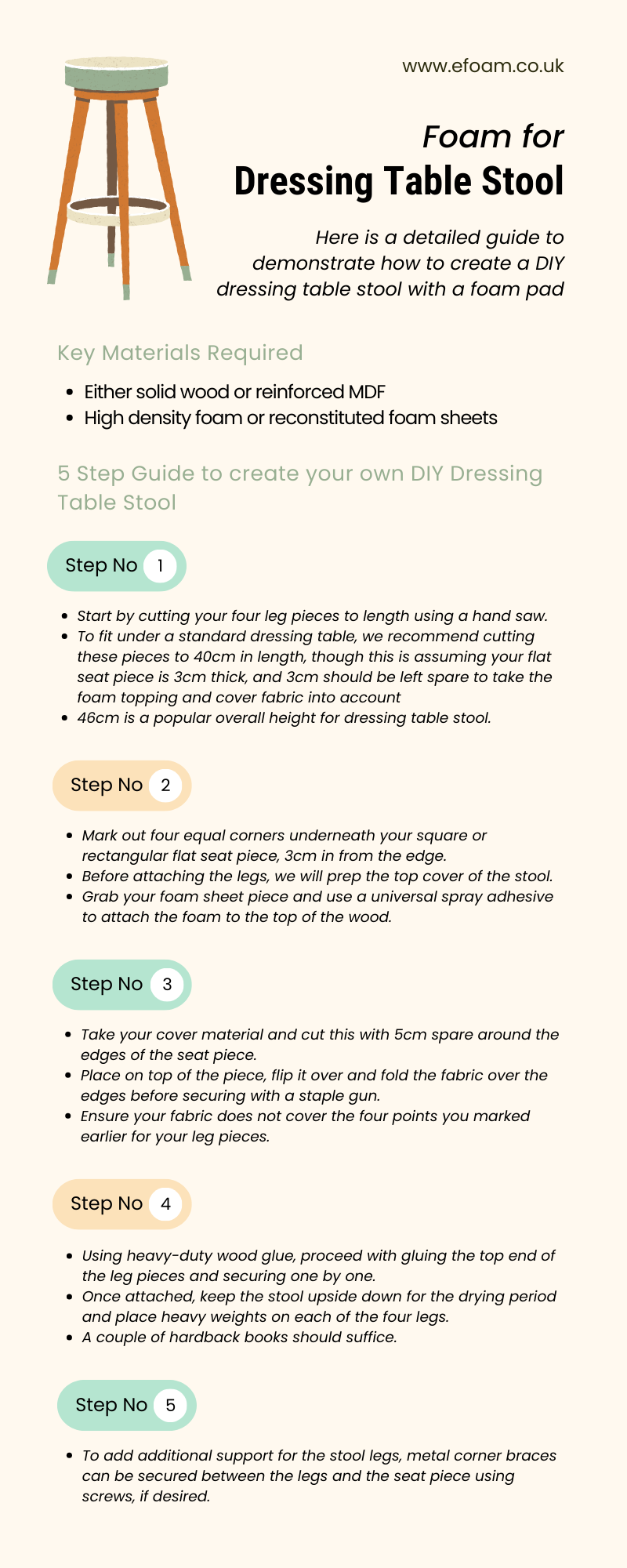
Foam for dressing table stool

With a great range of craft materials easily accessible online and in various craft shops, it is easier than ever to begin upholstery projects. Many are attracted to upholstery crafting as furniture can be made to an exact specification – including a certain height, shape and comfort level. This guide will demonstrate how to create a DIY dressing table stool complete with a foam pad.
There are two main materials that can be used to create your stool, though the easiest is wood. Plastic is also an option, but pieces likely need to be pre-ordered in your required shapes. That said, this can be expensive if they need to be custom made. Using either solid wood or reinforced MDF is therefore the more straightforward and cost-effective option, as it can be easily cut to size and modified at home using a few basic tools.
Foam is the perfect material to make your dressing table stool comfortable and can be cut to size & shape. Depending on your desired comfort level, we would recommend a high-density foam given the compact nature of a dressing table seat. The benefit of using a high-density foam is that it can provide just as much support as a thicker, lower density foam sheet. However, reconstituted foam sheets are also a good and durable option. These are typically found in many furniture items such as bar stools and seats on public transport.

For your own DIY stool made from wood, you will need four leg pieces (cut to your desired height), a square or rectangular flat seat piece, heavy duty hardwood glue, foam cushioning, a staple gun, and your cover fabric. Start by cutting your four leg pieces to length using a hand saw. To fit under a standard dressing table, we recommend cutting these pieces to 40cm in length, though this is assuming your flat seat piece is 3cm thick. 46cm is a popular overall height for dressing table stools - so in this instance, the legs will be 40cm, your flat seat piece will be 3cm thick, and 3cm should be left spare to take the foam topping and cover fabric into account.
Next, mark out four equal corners underneath your square or rectangular flat seat piece, 3cm in from the edge. Before attaching the legs, we will prep the top cover of the stool. Grab your foam sheet piece (which should measure the exact same dimensions as the flat seat piece) and use a universal spray adhesive to attach the foam to the top of the wood. Next, take your cover material and cut this with 5cm spare around the edges of the seat piece. Place on top of the piece, flip it over (so the wood is on top of the fabric), and fold the fabric over the edges before securing with a staple gun. Ensure your fabric does not cover the four points you marked earlier for your leg pieces.
Using heavy-duty wood glue, proceed with gluing the top end of the leg pieces and securing one by one. Once attached, keep the stool upside down for the drying period and place heavy weights on each of the four legs. A couple of hardback books should suffice. To add additional support for the stool legs, metal corner braces can be secured between the legs and the seat piece using screws, if desired.
Should you require any assistance when ordering foam for your DIY project, please contact us today.


